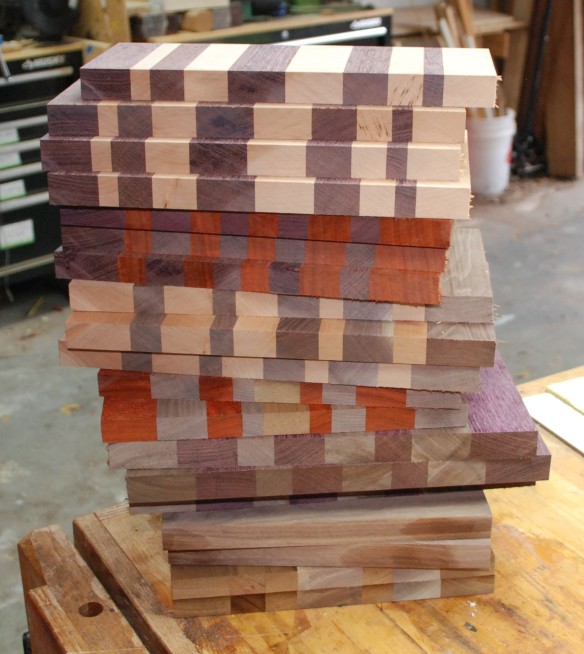A lot of folks have shown how to make an end grain cutting board. I am not going to add a whole documented build to the pile. I will add one flattening tip to help save time and make a better product. A friend of mine is getting married, so that calls for a wedding present. What better device to induce marital bliss and/or arguments than a cooking implement? I would make him a vacuum if I could.
Enter some cherry from previous wedding presents and maple from the stash. I always clamp my cutting boards down to a piece of flat plywood with wax paper below. That keeps the bottoms good and flat for the next phase. That oak beam in the center is my clamp caul.

This one has a ton of squeezeout, but I put packing tape on my clamp cauls, so all is well. The problem: How to deal with all the squeezeout, and what do we do about the uneven top? Run it through the planer! That causes blowout at the back end. I selected the better looking sections for the gift, and used the spares to make a small board for myself. I ran it through the planer as-is to demonstrate the problem.

Lots of pieces of wood get chipped off at the end because the grain runs up and down and is unsupported. This is with a helical cutter head using very light passes. That is a best case scenario normally. It can often be much worse. Why do this at all? Well you get really fantastically flat tops in a hurry when you use the planer.

Tricky, so what do we do? Take a block plane and cut a little chamfer on the trailing edge that will be exiting the planer. Or both entrance and trailing edges so you don’t get mixed up. The cutter will be shearing off the last bits of fiber, but the chamfer will mean that happens a little ways back from the bitter edge. Here is the edge I put on the big board, it isn’t big. Just a 1/16″ chamfer. The results from heavy cuts are no blowout and a very clean flat top!

If you don’t have a block plane, I bet a sanding block would do it too. That means you can plane the top flat quickly and without risk of end blowout. Just make sure you don’t plane through your chamfer. I shipped the big one out fast enough I forgot to take a picture, but here is the little one after a number of uses in my kitchen.

Chamfer your cutting boards for planer success!



























